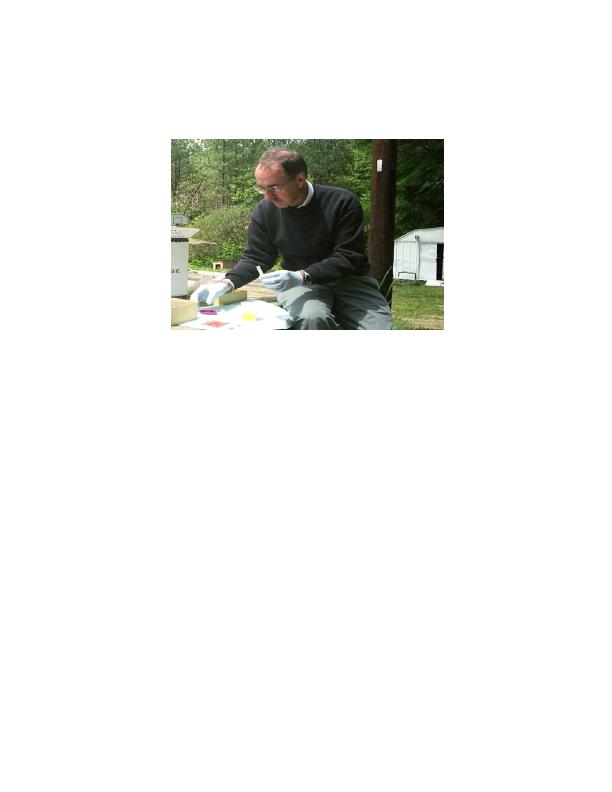
up EI (which led to two published EIs released
second component, ATSDR repeated the test
in March 2002) was to assess changes in body
for RBP in the three persons whose RBP was
burdens of uranium and possible kidney effects.
elevated in the second EI.
Seventy-nine (75%) of the 105 residents who
Urine uranium concentrations decreased by
participated in the first EI also participated in the
95% in the four members of the family who
second. The majority (95%) of persons whose
previously had increases in urine uranium. These
urine was analyzed
concentrations decreased
to assess possible
in seven (88%) of eight
kidney effects had
participants in the third
normal levels of
EI; concentrations in
retinol binding
five (63%) of the eight
protein (RBP),
exceeded the 90th
indicating that
percentile for urine
uranium had either
uranium levels in the
no adverse effects
general U.S. population.
on the kidneys or
The urine uranium
that the effects were
concentration increased
reversible.
in one participant, but
a detailed exposure
Analysis of urine
history and medical
uranium testing
history did not identify
results found
ATSDR staff member preparing urine sample at a
any contributors to this
significantly elevated
home in Simpsonville/Fountain Inn.
increase.
urine uranium
concentrations in 90% of the EI participants.
SCDHEC will submit a proposal to obtain
These concentrations decreased in most (63%)
funding from ATSDR to conduct a community
of the participants; they increased in 37% of the
health investigation to assess the health impact
participants. For most of those with increased
of exposure to uranium from drinking water on
concentrations, the increase was small, but four
the residents of Simpsonville/Fountain Inn. As
participants had large (greater than twofold)
a result of these investigations, water lines have
increases.
been established in this area; therefore, many of
the residents are no longer exposed to well water.
Further followup was needed, however, because
Health Education and Community Activities
the majority of participants in both exposure
investigations had urine uranium levels above the
South Carolina has been a participant in ATSDR's
90th percentile of the general U.S. population.
This followup was needed to determine the long-
this program, SCDHEC has received funding and
term effects, if any, that could result from this
technical assistance for the development of commu-
exposure.
nity education and activities associated with hazard-
ous substances in the environment. Since April 2002,
A third EI was released in September 2002. This
more than 600 South Carolina residents have at-
EI, 1416 months after most of the participants
tended 46 environmental health education seminars,
stopped drinking the well water, had two
workshops, town meetings, or other programs. Thir-
components. In the first component, ATSDR and
ty-one educational tools were developed in support
SCDHEC repeated urine uranium assays in all
of this activity. Examples of recent environmental
members of one family. In this family, four of
health activity include the development, production,
five persons had a twofold to eightfold increase
and distribution of more than 25,000 copies of the
in their urine uranium level between the first and
2002 South Carolina fish consumption advisories.
second EIs. The purpose of this testing was to
determine if the urine uranium levels were still
increasing in this family and, if so, why. In the
Migrant Clinicians Network (MCN), ATSDR


 Previous Page
Previous Page
